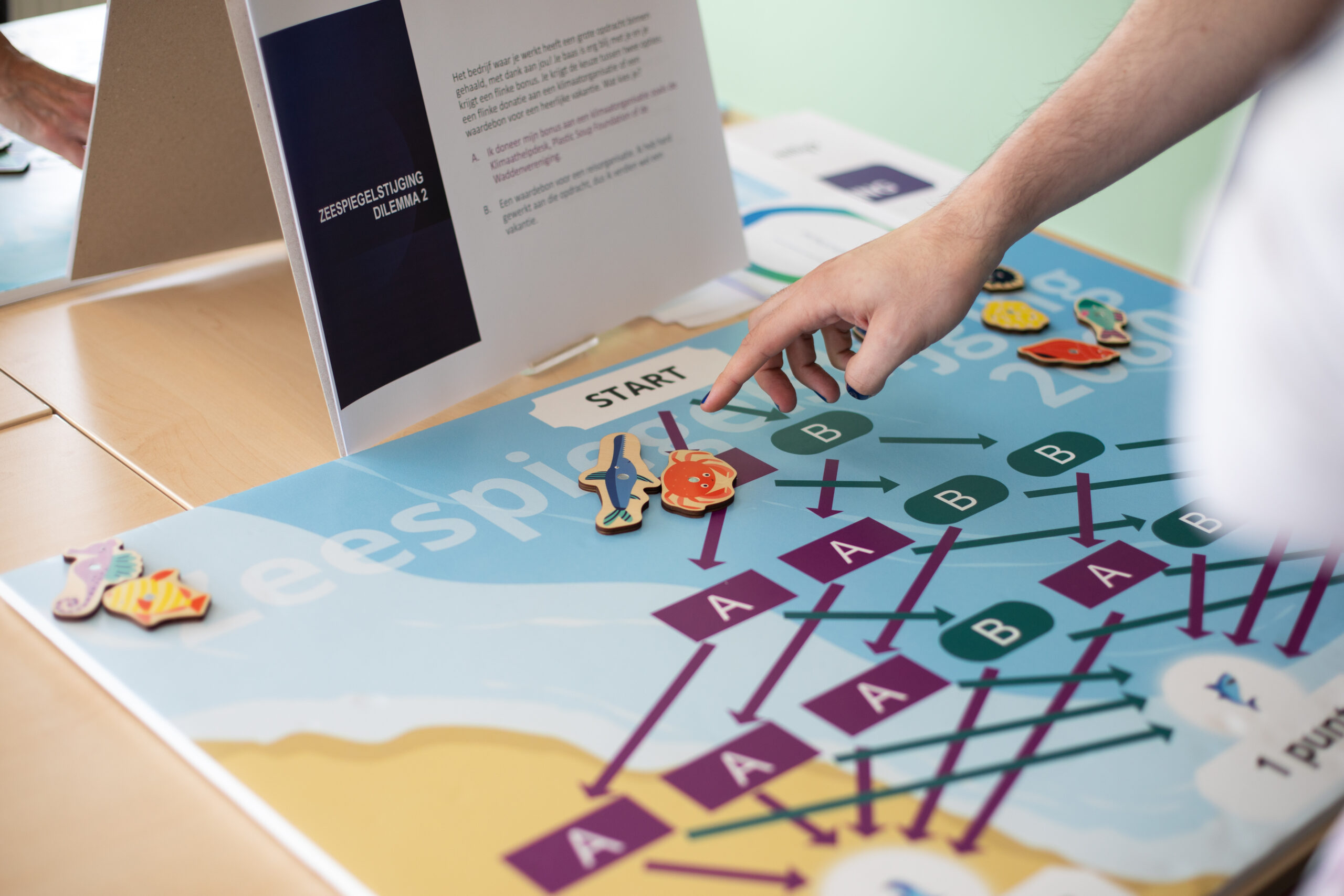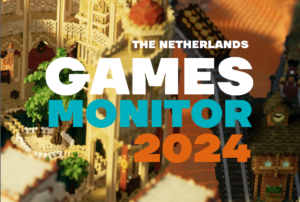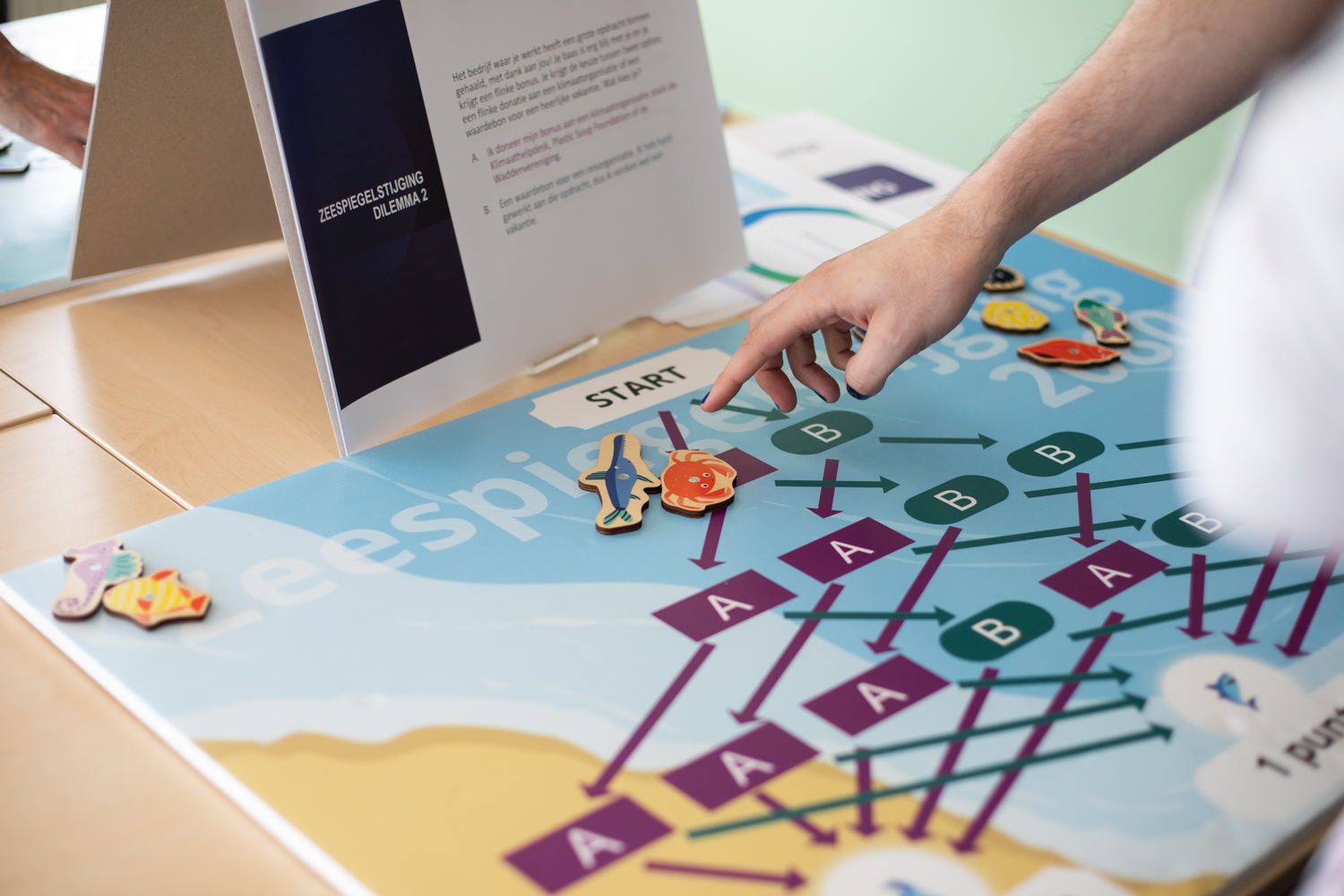
Can a board game help young people better understand sea level rise? Over the past two years, Nieske Vergunst, a researcher at Utrecht University’s Freudenthal Institute, explored this question. She developed the Sea Level Game, tested it with various youth groups, and analyzed its impact. The findings? After playing the game, participants felt more aware of sea level rise and more confident in their ability to influence it. The study has been published on 12 March 2025 in Geoscience Communication.
Download and play the Sea level game
Welcome to the Sea Level Game! We travel from the year 2023 to 2080. By the time we arrive, sea levels will have risen—but you decide by how much and what solutions have been put in place. Work together with your fellow players to shape the outcome and determine whether the Dutch coast remains safe for generations to come.
Right to know
“We are missing a large portion of the population when it comes to communicating about climate change—especially those with low science capital,” says Vergunst, referring to individuals who have less exposure to science. “With my research, I wanted to explore whether a game could help bridge that gap.”
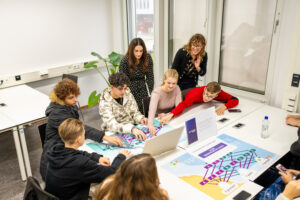
Vergunst believes that climate communication should reach everyone—not from an activist perspective, but out of fairness. “Sea level rise affects us all. People have a right to understand the issue and the impact of their choices,” she explains. “If I can contribute even a little to that awareness, I’ll consider my work a success.”
Participants of the game are divided into two teams: the Sea Level team and the Solution Level team. Both teams face four dilemmas, with each decision moving their team’s pawn one step forward on the game board. The Sea Level team influences the extent of sea level rise—for example, will they choose to fly or opt for a more sustainable alternative? Meanwhile, the Solution Level team determines how society responds to rising water levels. Should they sacrifice a football field to widen the dike?
Positive impact
Vergunst tested the game with students from two vocational schools, as well as visitors at a science festival and an undergraduate open day. In total, she collected 117 valid questionnaires from participants aged 16 to 25—the study’s target group.
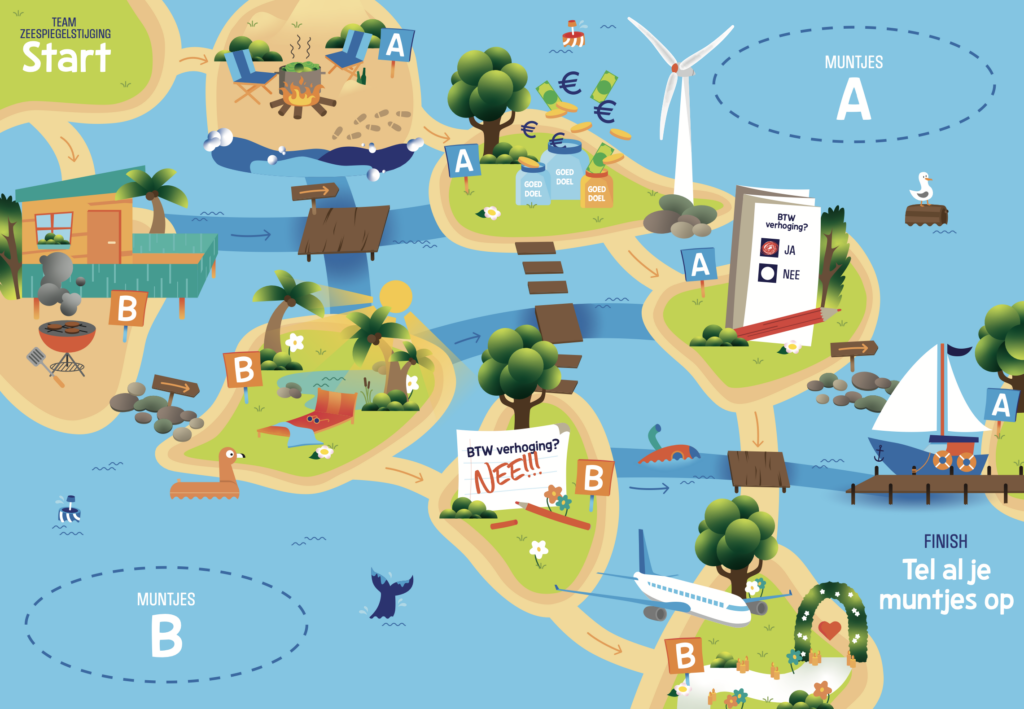
Analysis of the responses revealed that the game had a positive effect on response efficacy—after playing, participants felt they had more influence over how much sea levels would ultimately rise. Additionally, it increased their perceived relevance of the issue, making them more aware that sea level rise directly affects their lives.
Notably, the game’s impact was independent of science capital: both those familiar with science and those with less exposure to it benefited equally.
The teams have navigated all the dilemmas, and it’s time to assess the results. Team Solution Level frequently opted for investments to manage rising waters, placing their pawn in the “high solution level” box. Meanwhile, Team Sea Level favoured choices that contributed less to sea level rise, landing their pawn in the “low sea level rise” box. This has led to the following scenario for 2080:
Sea level rise has remained fairly low, averaging about 30 cm. Due to strict climate regulations, many polluting industries have left the Netherlands. We invest a lot in research and innovative solutions to keep the water out, and our we have our water management well in order. Other countries hire Dutch companies en masse to build dikes and flood defenses. Due to high taxes on fuel, we use more locally produced food and products, and holidays outside our neighboring countries are only for the rich.
Accessible for anyone to use
Vergunst believes the study demonstrates that board games can effectively engage young people with scientific topics. This insight is valuable not only for science communication professionals but also for researchers.
“I hope people consider games more often as a tool for science communication,” Vergunst says. “A dilemma-based game can be particularly effective in helping players experience the impact of their choices, when it comes to healthy eating or social media use, for example. We have carefully outlined the design process, making it accessible for anyone to use.”
Source: Utrecht University press release
Publication
Vergunst, N., Varol, T., and van Sebille, E.: Designing and evaluating a public engagement activity about sea level rise, Geosci. Commun., 8, 67–80, https://doi.org/10.5194/gc-8-67-2025, 2025.

